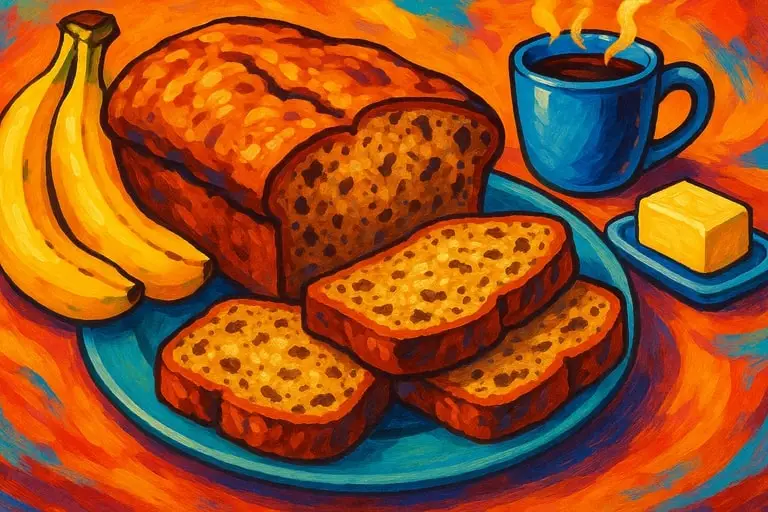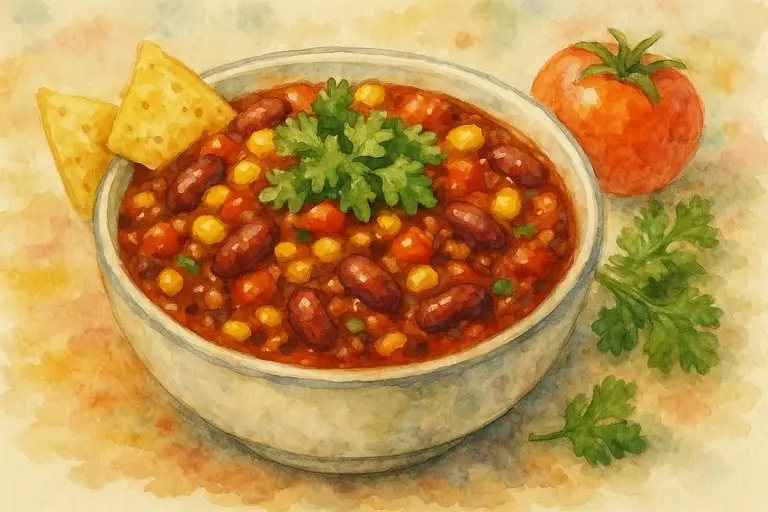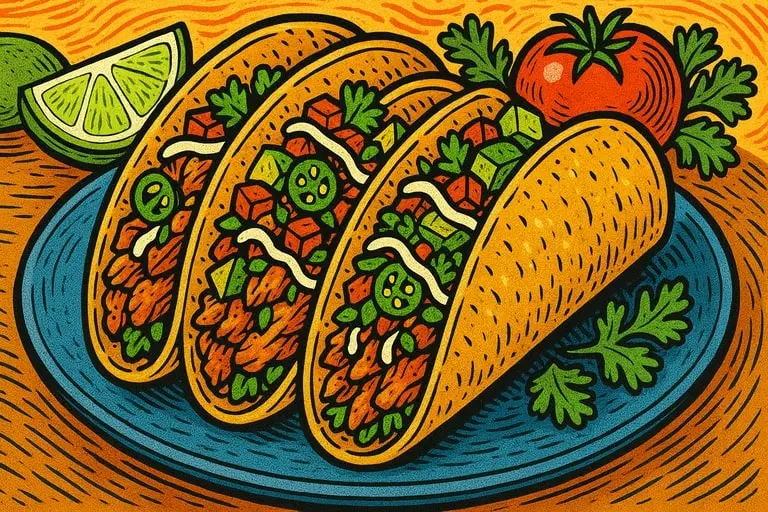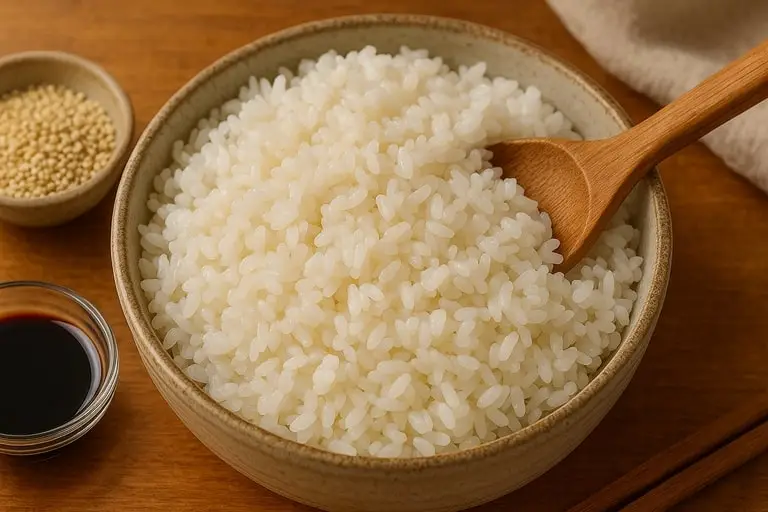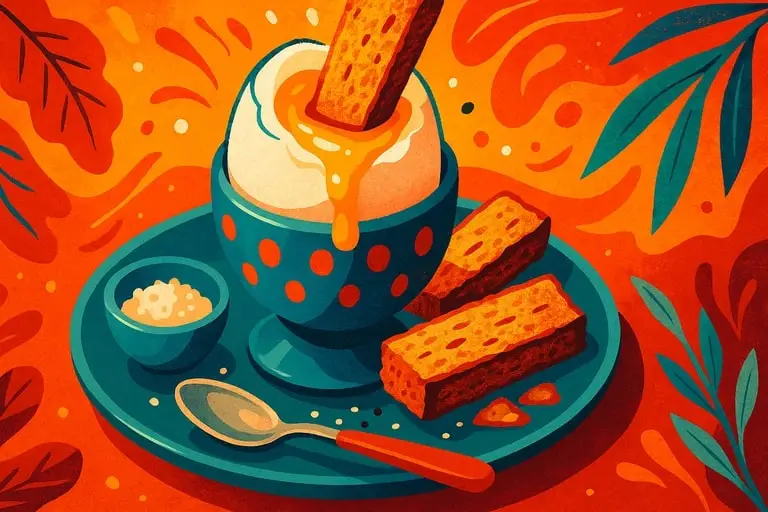Banana bread has become one of the most iconic comfort foods in modern baking, beloved for its moist crumb, rich aroma, and ability to transform simple overripe fruit into a treat that is both practical and indulgent. Its appeal lies not only in flavor but also in accessibility; nearly every household has found itself with bananas too ripe for casual eating, and banana bread provides the perfect answer to food waste while offering warmth and nourishment. As both tradition and trend, banana bread represents a story of resourcefulness, adaptability, and enduring popularity that spans continents and generations.
The origins of banana bread trace back to the early twentieth century, when baking powder and baking soda gained widespread availability. These leavening agents enabled quick breads to rise without yeast, opening the door for recipes like banana bread to flourish. During the Great Depression, resourcefulness became a necessity, and overripe bananas—once discarded—were repurposed into sweet loaves that stretched household supplies. This history imbued banana bread with cultural symbolism as a dish born of necessity yet celebrated for its comforting flavor.
At its heart, banana bread showcases the transformation of humble ingredients. Bananas provide natural sweetness, moisture, and a subtle tropical aroma that defines the loaf. Flour, eggs, and sugar build the structure, while butter or oil enrich texture. Spices such as cinnamon, nutmeg, or cloves elevate the base with warmth, ensuring that each slice delivers both familiarity and depth. These simple ingredients come together to create a product that is far greater than the sum of its parts.
The sensory qualities of banana bread contribute significantly to its universal appeal. The aroma of bananas mingling with caramelizing sugars fills kitchens with anticipation, often evoking nostalgia and comfort. The moist, tender crumb contrasts with golden crusts, while flecks of banana throughout remind bakers of the fruit’s role. These sensory experiences ensure that banana bread is not merely eaten but felt, engaging memory and emotion as much as taste.
Banana bread has also become a versatile canvas for experimentation. Chocolate chips, walnuts, pecans, or dried fruit add layers of texture and flavor, while glazes or cream cheese fillings transform the humble loaf into something decadent. Health-conscious bakers substitute whole wheat flour, reduce sugar, or incorporate oats and seeds, proving that banana bread adapts easily to contemporary tastes without losing its essence. This adaptability explains why banana bread never fades from culinary relevance.
From a nutritional perspective, banana bread offers more than indulgence. Bananas provide potassium, vitamin B6, and dietary fiber, while eggs and flour contribute protein and structure. Of course, the nutritional value depends on recipe choices—extra sugar or heavy fats can tip the loaf toward decadence, while mindful substitutions balance health and indulgence. This flexibility enables banana bread to serve as both treat and everyday snack, depending on intention.
Culturally, banana bread carries symbolic meaning beyond sustenance. In many households, it represents care and hospitality, often baked to share with guests or gifted to neighbors. Its simplicity makes it accessible, while its warmth conveys generosity. During global crises such as the COVID-19 pandemic, banana bread reemerged as a symbol of comfort, with millions turning to the familiar loaf as both activity and solace in uncertain times.
The preparation process itself adds to its appeal. Unlike yeast-based breads that require kneading and proofing, banana bread comes together quickly, demanding little more than mashing bananas, mixing ingredients, and baking until fragrant. This ease ensures that even novice bakers can achieve satisfying results, fostering confidence in the kitchen and reinforcing baking as both skill and therapy.
Professional bakers also recognize banana bread’s role in business. Cafés and bakeries feature it as a staple because of its broad appeal and consistency. Sliced loaves pair perfectly with coffee, encouraging repeat purchases, while variations—muffins, mini-loaves, or gluten-free options—expand offerings without straying far from tradition. Its reliability makes banana bread not just beloved but commercially valuable.
Globally, banana bread reflects cultural fusion. In the tropics, where bananas grow abundantly, local variations incorporate coconut, tropical spices, or alternative flours. In Western contexts, it serves as a nostalgic comfort food with countless family recipes passed down. These diverse expressions prove that banana bread transcends borders, adapting seamlessly to different ingredients while retaining its core identity.
Ultimately, banana bread endures because it embodies resilience and creativity. It transforms excess into treasure, combines simplicity with flavor, and adapts to shifting cultural and dietary landscapes. More than a recipe, it represents a tradition that connects past and present, households and communities. Through every loaf baked, banana bread reinforces its role as a timeless companion in kitchens worldwide.
Banana Bread Recipe and Baking Mastery
Perfecting a banana bread recipe requires understanding the science of baking and how ingredients interact. While it may appear simple, the choices made in proportion, mixing, and baking profoundly influence outcome. A moist, flavorful loaf results not from chance but from an awareness of how each component contributes to structure, taste, and texture.
Bananas themselves serve as the cornerstone of any banana bread recipe. Overripe bananas, with skins mottled brown and flesh soft and aromatic, provide natural sweetness and moisture. Their starches have converted into sugars, ensuring both depth of flavor and tenderness in the finished loaf. The ratio of banana to flour is critical: too little, and the bread becomes bland; too much, and it risks collapsing into heaviness. Balance defines success.
Flour selection also shapes texture. All-purpose flour creates a reliable crumb, while whole wheat flour introduces nuttiness and density. Gluten-free alternatives, such as almond or oat flour, adapt the recipe to dietary preferences, though adjustments to moisture and binding are required. Understanding these interactions empowers bakers to adapt recipes confidently while maintaining desirable outcomes.
Sugar, whether white, brown, or alternative sweeteners, not only sweetens but also influences moisture retention and caramelization. Brown sugar, with its molasses content, yields a richer, denser loaf, while white sugar produces a lighter texture. Some bakers experiment with honey, maple syrup, or coconut sugar, each imparting unique character. The choice reflects both health considerations and flavor goals.
Fat content distinguishes recipes further. Butter contributes flavor and richness, creating a tender crumb, while oil offers moisture and longevity, ensuring loaves stay soft for days. Some modern recipes blend the two, capitalizing on butter’s taste and oil’s texture benefits. Fat balance, combined with eggs, determines the structure and mouthfeel of banana bread.
Spices enhance banana bread’s character. Cinnamon remains classic, but nutmeg, cardamom, or ginger introduce variety. These aromatic elements elevate the fruit’s sweetness without overpowering it, creating complexity from simplicity. Bakers often customize spice blends, adding personal signatures to family recipes passed through generations.
Mixing technique influences final texture. Overmixing develops gluten excessively, leading to toughness, while undermixing leaves streaks of flour. Recipes emphasize gentle folding, ensuring even distribution without compromising tenderness. This balance illustrates how technique, as much as ingredients, determines success.
Baking itself demands precision. Oven temperature, typically around 175°C (350°F), ensures gradual cooking and caramelization. Variations occur based on pan size—mini-loaves or muffins bake faster, while large loaves require patience to prevent undercooked centers. Testing with a skewer or toothpick remains essential to confirm doneness without dryness.
Resting and slicing represent final acts of mastery. Banana bread benefits from cooling, which allows structure to set and flavors to deepen. Cutting too soon risks crumbling, while patience rewards with clean slices and enhanced taste. These final touches remind bakers that mastery includes restraint as well as action.
Creative adaptations extend recipes further. Chocolate chips, nuts, dried fruit, or swirls of cream cheese provide variety, while vegan versions employ flaxseed or applesauce in place of eggs. Each adaptation proves that banana bread recipes evolve continually, reflecting dietary shifts, culinary trends, and individual creativity.
Ultimately, mastering a banana bread recipe lies in understanding both science and tradition. It requires respect for ingredients, sensitivity to technique, and openness to adaptation. Through this balance, bakers transform ripe bananas into loaves that comfort, nourish, and inspire, reinforcing banana bread’s timeless place in baking.
Banana Bread and Homemade Comfort
Banana bread resonates most powerfully in the context of homemade comfort, where its aroma and taste symbolize care, stability, and connection. Baking banana bread at home transforms kitchens into spaces of warmth and memory, where the act of mixing and baking becomes as meaningful as the final slice. Its role in homemade traditions highlights how food serves not only physical nourishment but also emotional and cultural sustenance.
The aroma of banana bread baking fills a home with anticipation, creating a sensory environment that signals comfort. Few scents rival the blend of caramelizing sugar, ripening bananas, and warm spices wafting from the oven. This olfactory experience lingers long after baking, embedding itself in memory and shaping associations between banana bread and safety, family, and belonging.
Homemade banana bread often represents resourcefulness, a reminder of how families transform surplus into sustenance. Overripe bananas, once destined for disposal, become opportunities for creation. This practice not only reduces waste but also reinforces values of mindfulness and sustainability, where nothing is squandered. Each loaf embodies resilience and creativity, teaching lessons that extend beyond the kitchen.
Banana bread also functions as a medium of care. Baked for family members, neighbors, or friends, it becomes a gesture of affection and hospitality. Wrapped and gifted, a loaf communicates warmth more effectively than words, serving as edible proof of thoughtfulness. In this sense, banana bread transcends its ingredients, becoming an expression of connection.
The act of baking banana bread fosters ritual in households. Families gather to mash bananas, stir batter, and monitor ovens together, embedding routines that pass from one generation to the next. These rituals preserve cultural and familial heritage, ensuring continuity even amid change. Children often carry these traditions into adulthood, linking past kitchens with present homes.
Homemade comfort also arises from adaptability. Banana bread welcomes substitutions based on what is available—different flours, fats, or sweeteners—allowing each baker to imprint individuality. This flexibility ensures relevance across contexts, whether baked in rural kitchens with limited supplies or modern apartments experimenting with gourmet twists. Its inclusivity explains why banana bread feels universally accessible.
Moments of hardship further highlight its role as comfort food. During uncertain times, baking banana bread offers grounding. The simple, repetitive actions of mixing, pouring, and waiting soothe anxieties, while the aroma provides reassurance. In global crises, its resurgence reflects not only practicality but also collective search for comfort.
Banana bread also connects across communities. Bake sales, fundraisers, or school events frequently feature it, chosen for its broad appeal and reliability. These contexts transform banana bread into a communal thread, linking individuals through shared enjoyment. In this sense, homemade comfort expands beyond households into broader networks of care.
From a psychological perspective, banana bread embodies nostalgia. Each slice recalls childhood kitchens, family gatherings, or moments of respite. This emotional resonance amplifies its appeal, ensuring that banana bread continues to comfort even as circumstances shift. Its ability to embody memory ensures that it never becomes obsolete.
Even in professional spaces, banana bread retains associations with homemade comfort. Cafés may sell it, yet its charm lies in evoking the feeling of something baked with love at home. This quality differentiates it from more elaborate pastries, grounding it in authenticity and simplicity that consumers continue to seek.
Ultimately, banana bread represents far more than sweet bread. It embodies care, memory, and resilience, offering comfort that extends from kitchen to community. Its role in homemade traditions confirms that baking is never just about sustenance but about connection, creativity, and the preservation of warmth in everyday life.
Banana bread has become one of the most enduring and beloved baked goods across the world, transcending its humble origins to claim a place in the collective culinary imagination. At its core, it is a recipe born out of thrift and creativity, a way to transform overripe fruit into something comforting, aromatic, and deeply satisfying.
The beauty of banana bread lies in its balance: sweet but not cloying, hearty yet tender, familiar yet endlessly adaptable. It is more than a loaf; it is a story of domestic kitchens, resourceful bakers, and the ability of simple ingredients to create a result greater than the sum of its parts. Every culture has its comfort foods, and for millions, banana bread occupies that cherished role, evoking memories of family kitchens, rainy afternoons, and the irresistible aroma of a loaf baking in the oven.
The history of banana bread reflects broader cultural shifts in both ingredients and tastes. Bananas themselves were once considered exotic, imported luxuries that only gradually became household staples. As trade expanded and the fruit grew more common, cooks began incorporating it into various dishes.
The invention of baking powder and baking soda in the nineteenth century opened new possibilities for quick breads, and banana bread emerged as a natural marriage of convenience and flavor. By the early twentieth century, recipes began appearing in cookbooks, and soon the loaf became a fixture in American and European households. Its popularity surged during times of economic hardship, when waste was unacceptable and every overripe banana represented potential nourishment. In that context, banana bread became both a symbol of resourcefulness and a small luxury in difficult times.
The sensory appeal of banana bread is difficult to overstate. When placed in the oven, the batter transforms, releasing aromas that seem to fill every corner of the home with warmth and comfort. The sweetness of bananas mingles with the caramel notes of sugar and the richness of butter, while the texture develops into something both hearty and soft. The first slice, still warm from baking, carries a tenderness that feels indulgent yet wholesome. Even its appearance is inviting: the golden-brown crust, sometimes cracked along the top, suggests rustic charm and homemade care. Each loaf tells a small story, not just of ingredients combined, but of an atmosphere created.
Part of banana bread’s universal appeal lies in its adaptability. While a basic recipe might call for flour, eggs, sugar, and bananas, the loaf readily accepts variations and additions. Some bakers incorporate nuts for crunch, others add chocolate for richness, while others experiment with spices like cinnamon, nutmeg, or cardamom. Health-conscious adaptations might replace refined sugar with honey, use whole-grain flour, or introduce plant-based alternatives. This flexibility ensures that banana bread remains relevant across generations and dietary preferences. It is not a fixed recipe but a canvas upon which each cook leaves a personal mark.
The act of making banana bread is as important as the loaf itself. The process is approachable even for novice bakers, requiring no elaborate techniques or specialized equipment. Mixing overripe bananas with everyday pantry ingredients creates a batter that feels forgiving, tolerant of experimentation and imperfection. This accessibility has made banana bread a gateway into baking for countless people, introducing them to the joy of creating something with their own hands. The satisfaction of seeing a loaf rise in the oven, of slicing into it and sharing with others, provides emotional nourishment as much as physical.
Culturally, banana bread has transcended its kitchen origins to become a symbol of comfort in times of uncertainty. During moments of global challenge, it often resurfaces as a baking trend, reminding people of home, routine, and resilience. Social media further amplifies this phenomenon, with images of freshly baked loaves circulating widely, inspiring others to turn to their own kitchens. In this way, banana bread has become both a personal ritual and a communal experience, connecting individuals through the shared act of baking and enjoying something simple yet meaningful.
The nutritional aspect of banana bread also contributes to its appeal. Bananas bring natural sweetness, vitamins, and fiber, elevating the loaf beyond mere indulgence. Depending on how it is prepared, the bread can be hearty enough to serve as breakfast, light enough to pair with tea, or sweet enough to act as dessert. This versatility ensures that it fits seamlessly into daily routines. It is not restricted to one category but rather moves fluidly across meals and moments, adapting to the needs and moods of those who eat it.
Banana bread also carries a certain timelessness. Unlike pastries tied to seasons or elaborate cakes reserved for celebrations, it thrives in the everyday. Its ingredients are simple and often already at hand, making it a reliable choice whenever the urge to bake arises. This accessibility ensures that it never fades from popularity. Even as culinary trends shift, banana bread retains its loyal following because it offers something fundamental: a reminder that comfort and satisfaction can come from the simplest combinations.
From a culinary perspective, banana bread bridges the gap between bread and cake, embodying qualities of both without fully belonging to either category. It has the sweetness and tenderness of a cake but the structure and sliceability of a bread, making it unique in the world of baking. This in-between identity allows it to appeal to a wide range of tastes and contexts. Whether served plain, toasted with butter, or adorned with toppings, it offers a base of familiarity while allowing endless interpretation.
Psychologically, banana bread taps into the human need for ritual and reward. The act of baking it provides a sense of accomplishment, while eating it offers comfort and nostalgia. It is a food that encourages sharing, strengthening bonds between family and friends. A loaf sliced and passed around the table becomes a symbol of generosity and community. Even when eaten alone, it carries with it the memory of those shared experiences, offering companionship in its own quiet way.
The role of banana bread in global food culture reflects its adaptability and universality. From rural kitchens to urban cafés, from family gatherings to online baking forums, it continues to find relevance. Its ability to cross boundaries of class, culture, and occasion ensures that it remains more than just a recipe; it is a cultural artifact that embodies resilience, creativity, and comfort. Each generation discovers it anew, bringing their own variations while honoring its essence.
Ultimately, banana bread endures because it embodies the values we seek in food: simplicity, warmth, adaptability, and connection. It is proof that extraordinary experiences can come from ordinary ingredients, that comfort can be created in a loaf, and that tradition can be reinvented endlessly without losing its soul. As ovens across the world continue to produce this golden, fragrant bread, its legacy grows deeper, affirming its place as one of the most cherished creations in the history of baking.
Sweet bread holds a unique position in the world of baking, embodying the intersection of indulgence, tradition, and comfort. Unlike savory loaves that primarily serve as a base for meals, sweet bread is a destination in itself, often enjoyed as a treat, a festive centerpiece, or a comforting snack shared among family and friends.
The very idea of sweetened dough transformed into a fragrant loaf carries with it centuries of cultural history and personal memory. From golden crusts enriched with butter to tender crumbs laced with sugar or honey, sweet bread has evolved into countless forms across the world, each version reflecting the character and values of the community that bakes it. Whether served plain, filled, braided, or adorned with toppings, it represents the artistry of turning the most humble ingredients into something celebratory.
The origins of sweet bread can be traced to ancient traditions, when bakers began experimenting with sweeteners such as honey, fruits, and later refined sugar to elevate ordinary loaves into something special. Early civilizations treated sweetened breads as luxurious items reserved for rituals or festivals. Over time, as sugar and spices became more accessible, recipes spread through Europe, Asia, and the Middle East, each region shaping the loaf with its own distinctive influences.
By the time baking became a household craft, sweet bread was no longer limited to the elite; it had entered kitchens everywhere, symbolizing abundance and hospitality. These loaves, passed from hand to hand, carried with them not only sustenance but also meaning, representing the generosity of the baker and the joy of sharing.
The preparation of sweet bread is as much about ritual as it is about technique. The process often begins with the simple act of combining flour, yeast, milk, and butter, a base that yields richness and softness when properly kneaded and allowed to rise. Time plays an essential role, with fermentation infusing the dough with character and depth.
To this base, bakers add sugar, honey, dried fruits, nuts, spices, or glazes, each addition transforming the loaf into something distinct. The act of waiting for dough to rise, of shaping and braiding, of watching the loaf brown in the oven, connects the baker to centuries of tradition. When the final result emerges, filling the air with its irresistible aroma, it becomes more than food; it becomes an experience that speaks to patience, anticipation, and joy.
Culturally, sweet bread is inseparable from celebration. In many parts of the world, holidays are marked by the baking of special loaves, from panettone in Italy to challah in Jewish tradition, from rosca de reyes in Spain and Latin America to tsoureki in Greece. These breads, often enriched with symbolic ingredients like eggs, spices, or fruits, serve as edible markers of identity and continuity.
They remind families of their roots, binding generations together through shared flavors and rituals. To bake such a loaf is not merely to prepare dessert but to engage in cultural storytelling, preserving heritage with every slice. This connection between bread and festivity ensures that sweet bread retains its special place on the table, both as nourishment and as a cultural artifact.
The sensory qualities of sweet bread are a large part of its appeal. Its aroma is distinct, a fusion of caramelizing sugar, melting butter, and toasting flour that fills the kitchen with warmth. The texture offers its own pleasures: the softness of the crumb, the delicate resistance of the crust, the occasional burst of sweetness from a raisin or nut.
Visually, sweet breads often carry a sense of artistry — braids, swirls, glossy finishes, or powdered sugar decorations that elevate them beyond ordinary loaves. Every sense is engaged, from sight to taste, creating an experience that is as aesthetic as it is culinary. These qualities explain why sweet bread continues to inspire affection; it is not simply eaten but experienced in full.
Economically and socially, sweet bread has long been a vehicle for generosity. In many traditions, loaves are gifted to neighbors, friends, or guests, symbolizing goodwill and hospitality. The act of giving bread, sweetened and enriched, signals not only sustenance but also care and abundance. In villages and towns, bakers often prepared extra loaves during festivals specifically for sharing, reinforcing community bonds. Even today, gifting a loaf of homemade sweet bread carries with it emotional weight, a gesture that speaks to effort, warmth, and connection. This tradition persists because the loaf itself embodies values that transcend time.
In the modern kitchen, sweet bread continues to evolve. Health-conscious bakers experiment with alternative flours, natural sweeteners, or plant-based enrichments, creating loaves that balance indulgence with contemporary lifestyles. Meanwhile, gourmet interpretations introduce unexpected flavors — cardamom, saffron, citrus zest, or exotic dried fruits — transforming the loaf into a playground for creativity.
Cafés and bakeries highlight these loaves as premium offerings, drawing customers with their inviting aromas and nostalgic associations. Yet even with innovation, the core identity remains the same: sweet bread as comfort, as tradition, as a celebration of the ordinary elevated into the extraordinary.
The psychological effect of sweet bread is worth noting. Its preparation and consumption both provide a sense of comfort and reassurance, a reminder of stability in an often chaotic world. The act of baking, with its measured steps and clear outcomes, offers mindfulness, while the act of eating satisfies both hunger and memory.
Many associate the aroma of sweet bread with childhood, holidays, or family gatherings, making each bite a portal to the past. This emotional resonance gives the loaf power beyond its ingredients, embedding it into personal histories that linger long after the crumbs are gone.
The resilience of sweet bread lies in its ability to adapt while remaining familiar. Unlike fleeting trends, it holds an enduring place in diets because it embodies values that are universal: celebration, sharing, indulgence, and comfort. Even as tastes shift and new desserts emerge, sweet bread retains its relevance, evolving to meet new expectations while never losing its essence. That continuity ensures its survival not only as a recipe but as a cultural institution. Its endurance is a testament to the profound human need for foods that both sustain and delight.
In many ways, sweet bread embodies the very philosophy of baking. It is about patience, transformation, and care. From a lump of dough emerges something golden, fragrant, and nourishing. That transformation mirrors larger truths about life and culture: the ability to create beauty from simplicity, to invest time and receive abundance in return, to craft with intention and share with generosity. Each loaf, no matter how ordinary, carries within it that symbolism, reminding us of the artistry inherent in even the simplest acts of cooking.
Looking forward, sweet bread will undoubtedly continue its journey through kitchens worldwide, adapting to new contexts while preserving its timeless qualities. Whether flavored with local ingredients, reimagined by innovative chefs, or baked in home ovens during holidays, it will always retain its ability to unite people across generations and cultures. The act of breaking bread together is one of humanity’s most enduring rituals, and when that bread is sweet, enriched, and celebratory, it reinforces joy in its purest form.
Ultimately, sweet bread is more than a dish; it is an idea, a cultural constant, a vessel for memory, meaning, and connection. It tells us that food is not only fuel but also story, comfort, and ritual. To bake or share a loaf of sweet bread is to participate in a tradition that spans continents and centuries, uniting past and present in a single golden crust. Its presence on our tables affirms that some of life’s simplest pleasures are also its most profound, and that the sweetness of bread, like the sweetness of life itself, is meant to be savored and shared.

